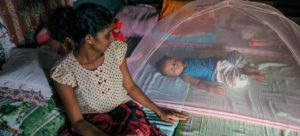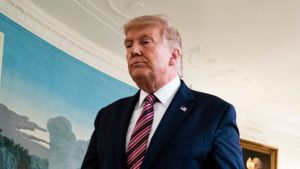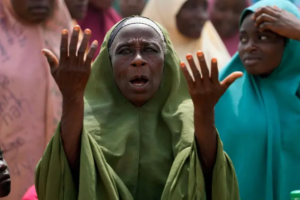America is unable to contain the surging pandemic because we refuse to reckon with the racial inequities that drive it.
The concentration of over 223,000 US Covid-19 casualties in vulnerable Black and brown communities, while unconscionable, has not been a surprise. Systems like policing and low-wage labor trap a disproportionate number of people from these communities in unsafe interactions. People of color are more likely to be stopped, arrested, and jailed. They are also more likely to work in low-wage jobs classified as essential, without the ability to take time off, get adequate personal protective equipment (PPE), or avoid exposure to people who refuse to wear masks.
Those elements, combined with other socioeconomic factors such as segregated housing and lack of health care, suggest that Black and brown Americans will contract and die from Covid-19 at much higher rates than their white peers. Even as we continue to learn how exactly the virus infects and kills some but not others, the data confirm those fears. This summer, the Brookings Institution think tank found that racial disparities in Covid-19 deaths persist across “all age categories.”
What we did not know — and what our response has not reflected — is how those disparities are not just tragic outcomes but drivers of infection and death. As experts in social psychology, data science, sociology, statistical inference, and public safety, we constructed a new model that illustrates how the racial disparities in our essential systems amplify the risk of infection for everyone, including those who may have imagined themselves as separate from the people behind the climbing casualty figures.
In short: Racial inequities are engines driving Covid-19 in the United States. As case numbers and hospitalizations spike across the country, our inability to protect ourselves and each other is directly tied to our inability to reckon with injustice.
Disaster in the synthetic city
To determine the magnitude of infections driven by racial inequity, our team used the best available real-world data to build a fictional metro area of 5 million people and simulate the virus’s spread. (You can read more about the model and its assumptions here.)
That allowed us to determine what percentage involved people who comprise three “essential” systems with large racial disparities: 1) police officers and the people who they come into contact with, 2) people returning home from jail and prisons (known as “churn”), and 3) frontline, low-wage workers with no option but to keep showing up.
Our simulation tracked the spread of the virus across a 40-day period. We assumed a police response similar to early, real-life epicenters such as New York and Seattle. A stay-at-home order went into effect 28 days after Covid-19 began to spread, residents largely followed social distancing guidelines (though not masks, per early guidance), and nonessential business closed. Then we looked at the spread of the virus 12 days after the lockdown began.
The results were staggering. At the end of our 40-day period, our three populations accounted for roughly 69 percent of new infections across the entire metro area. Policing and jail/prison churn accounted for 16 percent of the total spread; essential, low-wage work accounted for an additional 53 percent.
Notably, policing and churn contributed to infection rates even among those who had a greater ability to shelter in place. They accounted for 24 percent of the spread among Black residents who could likely stay put, and 17 percent of spread among similar white residents. That means Black people who had not been involved in the criminal justice system were still 40 percent more likely than their white peers to contract the illness from someone who had been.
Given the potent national conversation around disparities faced by Black residents, we focused our analysis on how they contribute to the virus’s spread. But the same dynamic holds for any minority group overrepresented in our three populations.
Because most cases go undetected — especially true in the early days of the pandemic — confirmed case numbers offer a poor picture of the virus’s actual spread. And even with enhanced contact-tracing efforts, case numbers offer almost no sense of how the virus spreads. Our model creates a more complete picture by using the best available data on the virus’s behavior to simulate the spread rather than relying on deeply problematic testing reports and contact tracing.
It uses US national averages for racial breakdowns in each population using data from the Bureau of Labor Statistics, FBI, and Bureau of Justice Statistics, and assumptions consistent with the latest science on transmission and recovery. Our rates are based on actual averages that account for “superspreader” events, reflecting their observed role in the virus’s overall spread. We pulled call data from police departments to estimate the number of officer-civilian interactions, and used Bureau of Justice Statistics reports to estimate the daily churn through jails and prisons.
Accounting for reasonable variation across cities, we estimate that over the initial 40-day time span, policing and jail/prison churn accounted for between 13 and 18 percent of new infections in most US metro areas. Essential, low-wage work accounted for an additional 50 to 56 percent.
The lesson? Inequities in these populations don’t just mean higher transmission in these communities. They fuel the spread of Covid-19 across entire regions, even in the presence of restrictive public health precautions that people follow. Because of racial inequities, people of every age, socioeconomic status, and race are contracting the virus and dying far more often than they had to.
When essential systems become engines of misery
Because of the racial inequities we have built into our essential systems, they have become combustion engines of misery. The virus flows freely in high-risk areas like holding cells, police encounters, low-wage workplaces, and public transit. The pistons of residential segregation, generational poverty, and targeted disinvestment along racial lines apply pressure. Covid-19 explodes outward.
Consider what our model says about the magnitude of the spread in a city like Chicago. As early as April 2, 12 days after the statewide stay-at-home order was issued, Chicago had 5,336 confirmed cases of Covid-19. Assuming that 1 in 10 actual cases is confirmed, that translated to roughly 53,000 actual infections.
Now, imagine an alternate reality in which the city recognized and was able to treat its essential systems as drivers of the virus’s spread right away. Police would only have made physical contact when there was no alternative. People in jails could have socially distanced, received frequent testing, and effectively quarantined in the event of infections. Every essential worker would be equipped with PPE and have the ability to socially distance, including on commutes and while at work.
Our model suggests these measures could have led to roughly 36,400 fewer community infections — a majority of the area’s 53,000 early infections. Not only would that have saved lives in the immediate term, but reduced the number of infections that dramatically could have flattened the curve early on.
Recent spikes have shown how vulnerable people who lack the ability to social distance can spread the virus across the country, from meat-packing plants and nursing homes to low-income apartments. The demography and geography look different, but there’s a common theme: The inequality undergirding our stratified society is putting us all at risk.
Our deadly choices, past and present
The inequities that have trapped the nation in this Covid-19 nightmare are not preordained. There is nothing inherently different about Black or brown people that makes these populations more likely to end up handcuffed on the street, moving in and out of a jail, or working a low-wage job. There’s no genetic condition that makes them more likely to be exposed to Covid-19.
Deliberate policy choices, past and present, drive these disparities. We choose to deny full-time workers a living wage, health care, and the right to take time off. We choose to house incarcerated people in a “pod” without the ability to urinate in private, much less socially distance. We choose to use policing as a default response to generations of discrimination and neglect.
The virus afflicts vulnerable people because, first, our policy choices afflicted them. Now, we have numbers to show how our indifference affects everyone else, too.
Any serious effort to fight this disease has to treat inequity as a driver of infection and death for everyone, rather than an unfortunate consequence for other people. In the short term, we cannot rip out essential systems that force the most vulnerable into the most high-risk interactions. But we can start to address underlying factors that make people more vulnerable, and make their interactions less frequent and dangerous.
When it comes to law enforcement, some of the most meaningful actions are within the purview of individual departments. They can reduce interactions by suspending traffic enforcement, prioritizing incidents that pose imminent harm over low-level offenses, and issuing warnings in lieu of citations or arrests. Individual officers can keep their physical distance and avoid detaining people — and especially booking them into jail. Because churn and police interactions account for roughly one in four cases among Black people outside of those populations, changes in public safety systems would disproportionately save Black lives.
Our model also demonstrates the urgency of effective PPE for essential workers and those they encounter. Along with health care professionals and law enforcement officers, low-wage, essential workers are the PPE for our society. Our safety depends on these populations having PPE, frequent testing, and the ability to self-quarantine if infected. A June study suggests that universal mask-wearing among essential workers and those they interact with could cut the spread dramatically, perhaps blunting the resurgence we’re currently seeing.
Those protections are the bare minimum. Essential workers need higher wages, food, and housing that does not depend on their next paycheck, and quality, affordable care if they do get sick. These are not priorities we can turn to when the pandemic is past — they are a crucial part of defeating it. Putting people in charge of their health, and in a secure enough financial position to actually follow health guidance, will make us all safer.
How to shut down the engine
To protect ourselves from Covid-19, Americans need to reject the idea that the most vulnerable people are somehow isolated, whether those people live in cities, are older, Black, or earn less than a living wage. Covid-19 threatens these groups more than others, and yet all face a greater threat because of their vulnerability.
If individual responsibility could fix this — the default position of more than a few governors in the face of rising Covid-19 numbers — it already would have. We fail to protect the people facing the largest threat — and then prioritize blame over prevention in our response.
The constant stream of bad news and dire warnings, coupled with a sense of hopelessness, can make systemic change feel impossible. We long for normalcy. But simply outlasting this pandemic will not mean we have dealt with the problems that made it so deadly.
Covid-19 is telling us, in the starkest possible terms, that the burdens of the most vulnerable — and racism specifically — pose a collective threat. Science is telling us the cost of our inaction. We can only defeat this pandemic by accepting those essential truths, and making the choices to shut down the engines of misery for good.
Dr. Phillip Atiba Goff is co-founder and chief executive officer of the Center for Policing Equity and a professor of African American Studies and Psychology at Yale University.
Dr. Amelia M. Haviland is the Anna Loomis McCandless Professor of Statistics and Health Policy at Carnegie Mellon University.
Dr. Tracey Lloyd is vice president of science at the Center for Policing Equity.
Mikaela Meyer is a doctoral student at the Heinz College of Information Systems and Public Policy and the Department of Statistics & Data Science at Carnegie Mellon University.




